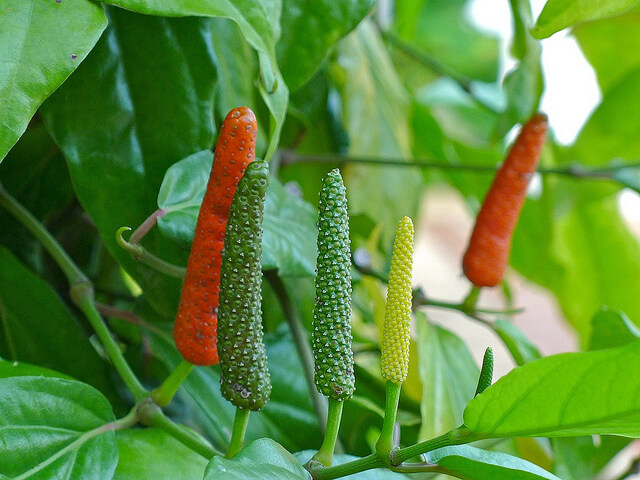- +033 2572 7171
- info@dhanvantary.com

4.5 Rating | 4500 Review

4.5 Rating | 4500 Review
Long pepper is a slender aromatic climber and creeping jointed stems and fleshy fruits are embedded into the spikes. The Leaves are of dark green color. Flowers of this plant are monoecious. Male and female flowers are borne on different plants. Leaves are ovate or heart shaped having dark green color above and pale green below. They are about 2 to 3 inches long.

This plant bear flowers during rainy season. Both male and female flowers are borne on different plants. Fruits of this plant are oval shaped consisting of orange and yellowish color and they grow in early winters, drupes are about 1 inch in diameter. Spike when once get ripened, turns red in color. Root are grayish brown colored and longitudinally wrinkled. They are Perennial woody roots.
Long pepper has its reference from the ancient textbooks of Ayurveda. Ayurveda has explained various uses of long pepper for dietary purpose as well as for various health purposes. It is basically used for healthy respiratory system. Long pepper is also beneficial for healthy digestion and healthy metabolism as well.
Pippali is useful herb for cold and mucus conditions of the lungs as it boosts vasodilatation and increases circulation to the lung. It acts as a bronchodilator, decongestant and expectorant. Pippali is a strong rejuvenate for the lungs. If you are prone to cold, this herb is recommended as it will prevent cold.
Its chemical composition is Piperine, piplartine, pipernoline, piperundecalidine, eicosadienamide, eicosatrienamide, guineensine, long amide, octadecadie, piperlongine, piperlongumine, pellitorine, pipercide, piperundecalidine and essential oils.
Kingdom
Plantae
Division
Magnoliophyta
Class
Magnolipsida
Order
Piperales
Family
Piperaceae
Genus
Piper
Species
Longum
Piper longum is an herb found growing in the hotter parts of India, from central Himalayas to Assam, Khasi and Mikir hills, Assam, Tamil Naidu and Andhra Pradesh. Also found in forest of Western Ghats from Konkan to Kerala. In countries other than India are Malaysia, Indonesia, Singapore, Sri Lanka and in other South East Asian regions.
|
Hindi / Sanskrit |
English |
||
|
Rasa |
Katu |
Taste |
Pungent |
|
Guna |
Laghu, Tikshna |
Physical Property |
Light, Piercing |
|
Virya |
Ushna |
Potency |
Hot |
|
Vipaka |
Madhura |
Metabolic Property (After Digestion) |
Sweet |
It balances Kapha and Vata Dosha.
Pippali is an herb holding so many medicinal properties which makes it to be very useful in various conditions and its properties are antibacterial, diuretic, antispasmodic, anti-inflammatory, anthelmintic, analgesic, carminative, laxative emmenagogue, expectorant and thermogenic.
Moola (Root) and Fruits are generally used.
Powder 0.5-1 gram in a single or multiple doses per day, usually administered after food.
For use in pregnancy, medical advice is required.
